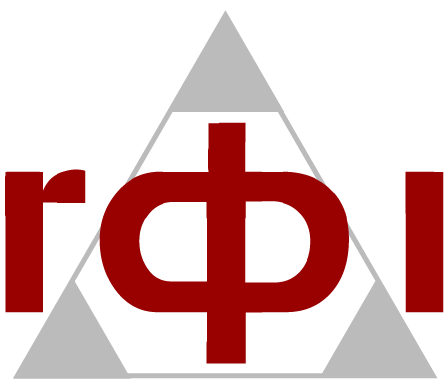Vaginal Atrophy (GSM)
15-Jun-2020
What is Genitourinary Syndrome of Menopause (GSM - the medical term now used to describe Vaginal Atrophy and its accompanying symptoms), how would a woman know and what can we do about it? Dr Vikram Talaulikar discusses this unpleasant condition.
GSM is a new term that describes various menopausal signs and symptoms. These include, not only genital symptoms (dryness, burning and irritation) and sexual symptoms (lack of lubrication, discomfort or pain and impaired function), but also urinary symptoms (urgency, burning and recurrent urinary tract infections).
The term GSM now replaces terms such as vulvovaginal atrophy and atrophic vaginitis which were used until recently, but had a limitation because they did not cover all the symptoms and did not imply that the symptoms were related to menopause. GSM can have a profoundly negative impact on the quality of life of post-menopausal women and women need to be made aware of the problem and be treated with an effective and safe therapy.
In Western populations, up to 65% of post-menopausal women report vulvovaginal symptoms. These include vaginal dryness, dyspareunia (pain during sex), vaginal irritation, itching, vaginal tenderness and vaginal bleeding / spotting during intercourse. These symptoms are related to the declining levels of the hormone, oestrogen, in the body. Oestrogen receptors are present in the vagina, vulva, musculature of the pelvic floor, urethra and bladder. Their levels decline with the menopause and can be restored by oestrogen treatment.
Due to oestrogen deficiency after menopause, anatomic and microscopic changes occur in the female genital tissues, such as reduction in the content of collagen and hyaluronic acid, and in the levels of elastin. There is thinning of the skin, alterations in the function of muscle cells and reduced blood supply. These changes reduce elasticity of the vagina, increase vaginal pH, cause changes in vaginal bacteria, diminish lubrication and increase the vulnerability to physical irritation and trauma.
Besides vulvovaginal symptoms, women also experience sexual dysfunction in the form of: a lack of desire (lowered libido); arousal difficulties; and orgasm difficulties.

Oestrogen plays an important role in the function of the lower urinary tract throughout the pre-menopausal period and lack of oestrogen after menopause causes symptoms such as burning, urgency, frequency, urinary incontinence and recurrent urinary tract infections. The genitourinary symptoms are chronic and often become worse if left untreated.
There are several treatment options. Non-hormonal therapies include long-acting vaginal moisturisers and lubricants. A number of over-the-counter vaginal lubricants (water-, silicone- or oil-based) and moisturisers are available without prescription. These are particularly useful for women wishing to avoid the use of oestrogen because of health concerns.
The most effective treatment, however, is low-dose vaginal oestrogen in the form of creams, pessaries or a ring.
The most popular are 'Vagifem' vaginal oestrogen pessaries (10mcg once daily for 2 weeks followed by a twice-weekly maintenance dose) and 'Ovestin' 1mg cream with vaginal applicator (one application daily for 2-4 weeks followed by a twice weekly maintenance dose).
Some women may have concerns about vaginal oestrogen treatments such as the inconvenience of vaginal administration or safety concerns regarding oestrogen-related cancers. In general, low-dose vaginal oestrogen preparations are safe for long-term use (as long as required) as very little or a negligible amount of hormone is absorbed in the circulating blood. These low-dose vaginal preparations can even be used in women with a history of breast cancer or endometrial cancer after appropriate discussion with their gynaecologist. Systemic hormone replacement therapy (oestrogen oral tablets, gels or patches) is preferred if other menopausal symptoms (such as hot flushes, night sweats, mood changes and sleep disturbance) are also present, whereas local vaginal oestrogen therapy is preferred when genitourinary symptoms are the only complaint. Systemic hormone replacement therapy (HRT) fails to resolve vaginal symptoms in 10% to 15% of women and local oestrogen treatment will be needed in addition.
Unless further robust data about long-term safety and efficacy are available, vaginal laser treatment cannot be recommended at present.
Selective Estrogen Receptor Modulators (SERMs)
Because of concerns about the potential stimulatory effects of systemic oestrogen on breast and endometrial tissues, SERMs have been developed with the aim of positive effects on targeted tissues with minimal negative effects on other tissues. Ospemifene is one of the SERMs approved for treatment of moderate to severe dyspareunia ('Senshio' in UK). Ospemifene is an oral non-oestrogen drug with an oestrogen-like effect on vaginal tissues. Published studies have shown improvement in vaginal pH, vaginal dryness and dyspareunia with daily use of Ospemifene 60mg orally.
'Intrarosa' 6.5mg vaginal pessary (to be used daily) is yet another novel treatment for GSM which contains the active ingredient prasterone (dehydroepiandrosterone or DHEA), which is biochemically and biologically identical to the endogenous human DHEA, a precursor steroid which is inactive by itself and is converted into oestrogens and androgens. Intrarosa is thus different from the oestrogen preparations since it delivers also androgen metabolites to the vagina.
echo For more information, you can contact Dr Talaulikar at the Menopause Clinic, London

